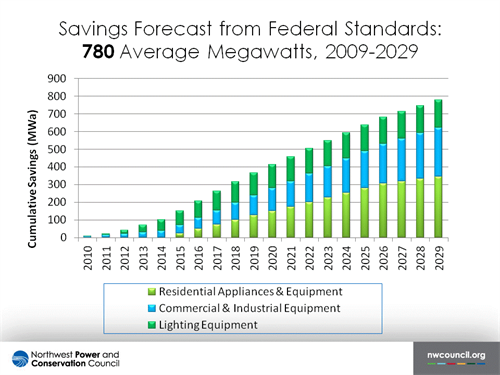Federal standards boost regional energy efficiency
- June 16, 2014
- John Harrison

More than 20 federal energy efficiency standards affecting appliances, lighting, and electronic equipment have been enacted since 2010, when the Council last revised its Northwest Power Plan. These are expected to produce about 100 average megawatts of savings by the end of this year and an additional 265 average megawatts by 2019, according to a report by the Council staff.
The new and revised standards will contribute about 8 percent of the savings needed to meet the Sixth Power Plan’s energy efficiency goals through 2014 and approximately 16 percent toward the Sixth Plan’s conservation goals for 2015 through 2019, according to the report. In all, through the end of the Sixth Plan's horizon, 2029, the standards will contribute 780 average megawatts in Northwest savings. Expressed as electricity, that's enough for 525,000 homes.
Federal energy efficiency standards are an important source of energy savings in the region, contributing approximately 1,000 average megawatts since 1987 when they first were enacted, or almost 20 percent of the savings achieved in the region since that time.
Currently, the federal Department of Energy (DOE) is rushing to comply with a court-supervised schedule to review and revise standards. By the end of 2013, the DOE had issued final standards for water heaters, refrigerators, freezers, central air conditioners, heat pumps, clothes washers, and room air conditioners, all of which are identified in the Sixth Power Plan as having significant potential to improve regional energy efficiency. It is anticipated that an additional eight federal standards will be finalized by the end of 2014, further reducing regional load growth and capturing additional energy-efficiency potential identified in the Sixth Plan.
The Council's manager of conservation resources, Tom Eckman, serves on the Department of Energy's Appliance Standards and Rulemaking Federal Advisory Committee.


